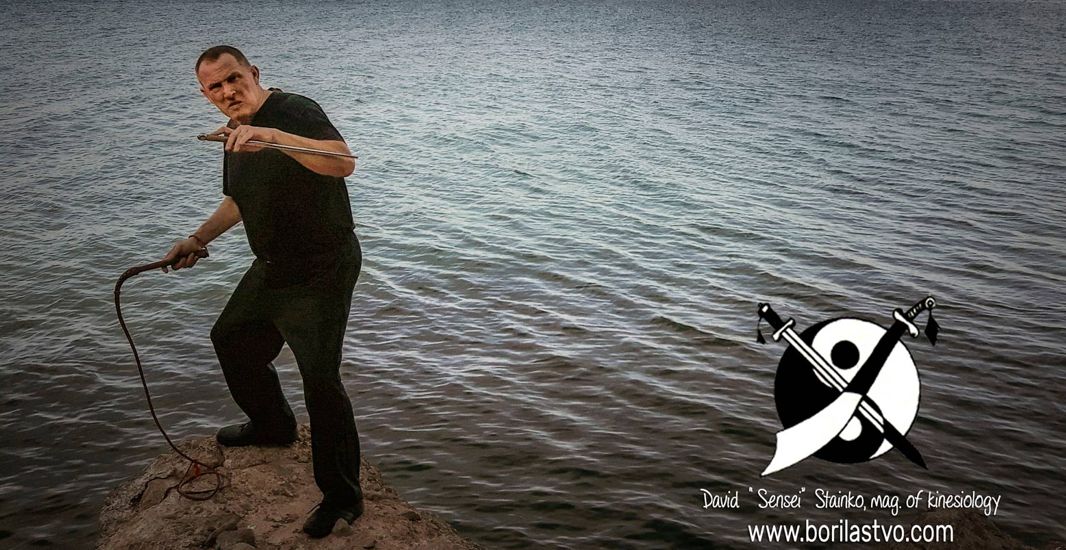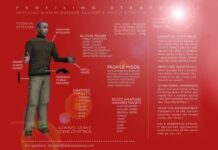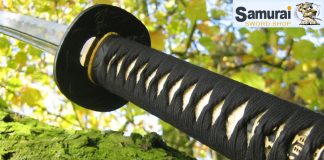In the long history of humankind, weapons had one of the most significant roles in the development of man. From the very beginning of man’s existence, he has been fighting and waging wars with other men. Under the influence of human imagination, from these numerous battles and wars have originated various different and often unusual weapons. Many of these historical weapons are hard to grasp and its purpose is hard to be understood by contemporary men.
Man has been using various hand-held objects and has been applying them in the purpose of self-defense from ancient times. Such objects were bones, stone and wood which were used for hitting, shooting or piercing. Also, over the centuries man was forced to use his various tools and other hand- held objects in order to protect himself from danger.
A dagger (knife), spear, bow and arrow and, somewhat later, an axe were the first human weapons which he used primarily for hunting and later on in battles between man and man, i.e. for military purposes. Over the years, because of circumstances people were forced to improve its usage. Many of them became remarkably skillful in the usage of various tools which is why it became a dangerous instrument for self-defence in their hands.
As men development through the centuries different weapons were also developed which were used in different ways. However, their aim was unique- to defeat the enemy. From ancient times, man were forced to encounter weapons and had to be acquainted with them and their purposes. This is the reason why certain men (and sometimes women) have trained and become real experts in handling these weapons. History of mankind is filled with a great network of different and ingenious weapons which, in some cases, had more than one purpose.
Those skillful individuals began to teach others and by doing so, created certain martial arts that handled weapons and those weapons were taught within various other martial arts. Little by little, trainees would give a certain martial art a name. By training a certain art, they would gain a title in that discipline that they were practicing.
Many martial arts masters as well as various war commanders have been crafting and designing types and kinds of weapons and some of them were exceptional in their production. Different types of self-defense skills have developed in many countries of the world because people were using everyday tools as weapons.
Many warriors (martial arts masters) carried weapons with them and used various types of weapons. They depended on certain weapons for certain types of fights, determined by their skill level and the goal of the fight.
Very few basic weapons that were once used are still used today. However, they have often been modified and therefore we have hundreds of different weapons in different parts of the world and the skills needed to handle some of them are far from easy. For example, in the art of kung fu there is considered to be 18 basic weapons. In karate there are 7 basic weapons to which 5 Samurai weapons are added. Ninjutsu uses 8 and tae kwon do uses 6 basic weapons. This data may vary according to the interpretation of different experts.
When some martial arts were just beginning to be practiced, others were completely out of practice as were the tools and weapons used in these martial arts. Unless those arts were revived, they were often completely forgotten or became folklore characteristic of their particular country. These martial arts may be cultivated and cherished in various societies in order to preserve cultural and historical properties and traditions of a certain country.
Different martial arts masters have systematized weapons techniques in different ways and have exercised the technique of their usage likewise. Most of those weapons today are considered to be outdated and obsolete. Athletes of different martial arts may practice with these weapons in order to gain physical and sometimes mental fitness.
Handling various tools and weapons is considered to be one of the most serious and most difficult phases of study in different styles of martial art. On the other hand, handling two weapons at the same time is said to be one of the most demanding exercises in the mastery of weapons use and represents an advanced technique in which only those who master the art can be proficient. In order to learn the correct and synchronized movement, i.e. the correct usage with two weapons simultaneously, a martial arts master needs long- term training and they need to gain certain experience.
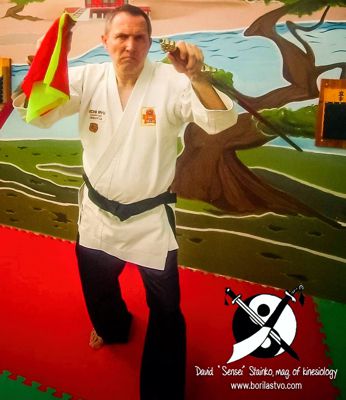
The simultaneous usage of two weapons has a long tradition and is well-known from the times of Ancient Egypt (a skill called Nabbut), Ancient Rome (gladiators, retarius – a fighter with a trident and a net, dimachaeri – fighters with two swords). The Italian style of fighting with swords (a knife called cinquedea was held in the left and a sword was held in the right hand), the Spanish skills (espada and daga), the Polynesian skills (Arnis de Mano, Arnis, Escrima, Kali), the Thai skill (Krabi Krabong), the Japanese style of fighting (skill called Nito ryu created by M. Musashi), The Chinese (various kung fu styles) as well as many other have been known and existed throughout history.
Before using two weapons simultaneously, a martial arts trainee needs to practice with only one weapon. Of course, before generally training with any weapon he needs to know some basic facts about the weapon he wants to practice with.
The examples are the following:
First and foremost, every trainee needs to know the basic division of weapons.
According to their origin, weapons are divided into so- called cold (melee) weapons (knife, sword, axe etc.) and firearms (pistol, gun etc.). They are further divided into soft weapons (chain, rope, nunchaku etc.) and hard weapons (sword, axe etc.). They are also divided into short weapons (knife etc.) and long weapons (rope etc.); blunt weapons (metal bats etc.) and sharpened or jagged weapons (knives, maces, kama etc.). Weapons can also be split into individual weapons (rope etc.) and weapons used in pairs (sai, nunchaku, tonfa, kama etc.) as well as so- called traditional weapons (katana etc.) and modern weapons (automatic rifle etc.). Likewise, there is also the division of weapons which are held (sword, kama etc.) and those that are thrown (knife, spear, bumerang etc.) and the weapon with which it is cut (katana etc.) and the wearh which is used to stab (spear). The aforementioned belongs to the basic division of weapons according to their purpose and their basic aim for which they are used.
When using any weapon its highest efficacy needs to be assured. Hard weapons need to be used as if they are soft, whereas soft weapons need to be used as if they are hard. This way their efficacy is maximized in the moment they are needed.
The appropriate distance from the opponent that needs to be maintained when fighting with a weapon is different in defense and in offense. If the distance becomes larger, it is harder to attack but it is easier to defend oneself. This is why short weapons such as knives are good for attacking, while long weapons, such as a spear, are better for defense.
When placing a weapon in your hand, you must feel respect for the weapon. Then you can begin with your training. Every weapon needs to be chosen patiently and carefully because it is not the same for every person. This is why it is not recommended that everyone use a standard weapons, but instead adapt the weapons to yourself. The weapon needs to be adapted to a person’s build (his height, the size of his hands as well as strength). So a weaker person of a smaller height should use shorter and lighter weapons, while a stronger and heavier person should use longer and somewhat heavier weapons. Also, weapons need to be chosen according to the degree of mastery a person has in handling a certain weapon.
If a person wants to use two weapons at the same time, he or she needs to consider the fact that it is much more effective to use weapons of a different weight and length. If the trainee is right- handed, he should place a heavier and longer weapon in his hand while using a lighter and shorter weapon in his left hand. Firstly, practice movements with only one and then with the other hand. Then it is safe to proceed with practice with both hands simultaneously.
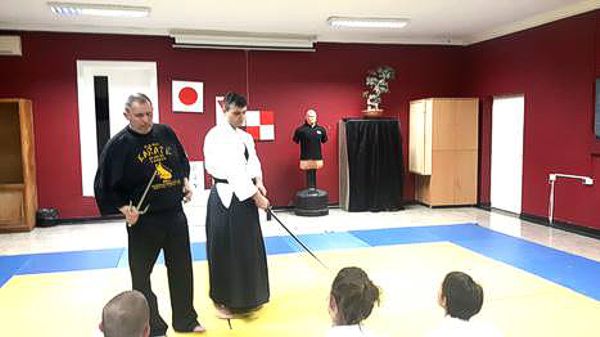
Be careful- it is not the same if a right-handed person uses the weapons with his right or left hand. The dominant hand is much stronger and skilled which is why it is much easier to use that hand. On the other hand, the trainee is much weaker and slower and more clumsy with the other hand. This is why he needs more patience and practice with the weaker hand in order to control the handling of certain types of weapons, especially if he wants to control two weapons simultaneously.
The same rule goes for using firearms. So for example, a right-handed man will use a more powerful weapon in his right hand. To be precise, a weapon of a greater calibre with a somewhat stronger recoil; generally, a semi- automatic firearm. At the same time, he will place a smaller and lighter weapon in his left arm- a weapon of a smaller calibre and, generally, an automatic firearm.
A person who plans to use two weapons simultaneously is often told to use the weapon in his or her weaker hand for the purpose of self-defense, while attacking and dealing blows with his or her stronger hand. Such notion is incorrect because this kind of a technique can be seen only in beginners while skillful masters will defend and attack the enemy in much the same way using either hand or weapon.
Sometimes a certain trainee of a specific martial art will spin the weapon at a great speed around their hand or body and sometimes they practice different gymnastic exercises while holding the weapon in their hands. They will generally use weapons for training purposes (a replica of a real weapon) which are of such low quality that one might call them a toy. Such replicas do not have a real blade (they are not sharpened or serrated). Also, those weapons do not have factual weight or the firmness that the real weapon actually has.
Trainees who wave and spin weapons around themselves are not necessarily real masters of those weapons and probably never experienced circumstances where they needed to use the weapons in actual combat. If these trainees, were to be attacked, their defense would fail and they would not know how to defend themselves properly.
It is not the same thing to practice with a training weapon, i.e. to practice with a replica of a weapon for the purpose of performing a kata, as it is to train using a weapon that would be used in a real fight. In an actual fight you won’t save you life by getting points for your artistic impression of using a weapon. Also, the speed at which you wave the weapon around, or your knowledge of gymnastics, will not impress or scare the street-wise attacker away.
An attack using weapons is by far the most dangerous type of an attack. A weapon, whether it is cold (melee) or a firearm, always unambiguously shows the intention of the attacker. The man who is attacking us or threatening us with a stick (a bat), a knife, a pistol or any other type of weapon (or a certain tool) is dangerous. Apart from that, he is most likely determined to seriously harm or kill us.
Any experienced martial arts master will tell you that you need to respect a basic rule when it comes to using a weapon in real combat- the rule of effectiveness and prudence or economy of movement. Economy of movement is the performance of movements with as little consumption of energy as possible. In other words, you should not make any unnecessary moves which are not vital for your defense or offense. By making the smallest mistake, if the surface you are standing on is slippery, a moment of hesitation, a premature or a late reaction- all this may bring grave consequences. Every superfluous movement is unnecessary and by waving uselessly with a weapon you are risking droping it out of your hands thus giving it to your opponent who will use it against you.
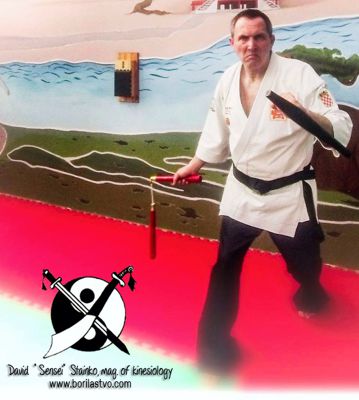
When using two weapons, it is ideal to use two different weapons. For example, a soft weapon (a nunchaku, a chain etc.) in your right hand and a hard weapon (a sword, a sai etc.) in your left hand (for a right-handed person). Be careful- a soft weapon bends and, unless you have practiced using it, you will not be able to defend yourself.
If you are holding two hard weapons in your hands, it is much better to hold a shorter weapon in your left hand while holding a longer weapon in your right hand. Also, you will be much more efficient if you are able to defend and attack equally with both hands.
When being attacked with a weapon it is not sufficient to fight off (to defend yourself). You will need to counterattack and fight as long as the opponent is holding a weapon in his hand. When the attacker drops his weapon and stops fighting and attacking you, you can slowly move back, but never before you have seen the attacker let go of his weapon and determine that he is no longer willing to fight.
You will often hear various experts say that, at the moment of attack with a weapon, the person who is being attacked needs to be brave, calm and collected. It is all true, however, every person who has survived such an attack will tell you one more important truth. When someone attacks you with a weapon, if you want to defend yourself successfully you should not be afraid of death. The fear of dying will make your movements stiff and insufficiently fast. Your reactions will be indecisive and slow and, what’s worse for you, not effective enough.
Be careful- the moment you took a particular weapon into your hands, you will have made it clear to your opponent which martial art you have been training in and when you begin to move, you show him how skillful you are using the weapons.
Never boast using weapons or attempt to impress or scare someone off. It could lead to a fatal mistake. So, your first mistake will be made if you aimlessly take weapons into your hands and your second mistake will be if you do not know how to use it properly. The third, and maybe your last mistake, will be if the person standing in front of you knows how to use the weapons better than you do.
Real martial arts masters who know how to use weapons will never use those weapons unless it is utterly necessary for the purpose of self-defense. Also, they will never hold weapons in their hands if they are not intent on using them. When picking up weapons, the master will know how to use them and, moreover, how to use them with both hands at the same time.
The correct usage as well as simultaneous control of two weapons demands long-term training and practice and the use of weapons in a fight calls for experience from the martial arts master.

